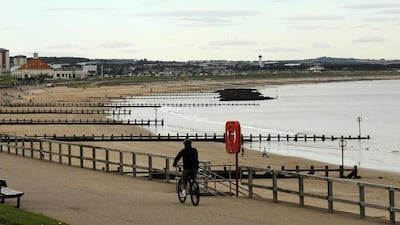On the docks in Aberdeen, oil workers put a brave face on hundreds of job cuts linked to sinking crude prices while union leaders warn that the worst is yet to come.
“It has happened before and it will happen again. There will probably be job losses, but that’s the way the industry works,” said Tony Maguire, a rig worker.
But for Jake Molloy, a regional organiser for the RMT union in Aberdeen, Europe’s oil capital in north-east Scotland, workers who lose their jobs face “a lifetime crisis”.
Mr Molloy was one of 20,000 people who lost jobs in a downturn in 1986 and said the decline is more dangerous now because North Sea offshore fields are depleting.
“I hope this is just a blip … but I am more concerned now than I was (then),” he said.
Oil prices are hovering at about US$50 per barrel for Brent crude, the European benchmark, representing a decrease of nearly 60 per cent since June when prices peaked at $115 a barrel.
Oil majors have been quick to react: BP, Shell, and Conoco Phillips all announced cuts in the last six months. BP alone has said it is cutting 300 jobs in Aberdeen.
The recent price fall has magnified attention on the high operating costs in the deep North Sea fields, with producers desperate to trim budgets even when prices were higher. Over the past decade, production from Scotland’s oil and gas fields has fallen by half.
More than half of all jobs in Aberdeen are linked to oil, yet at a time when the industry might be facing the biggest crisis in its history, the atmosphere in the Scottish hub has remained strangely calm.
In the port of Aberdeen, where dockers are busy loading equipment for a rig onto massive vessels, workers were trying to stay optimistic.
Robert, who has worked on the dock for 29 years and whose son is doing an apprenticeship in the sector, dismissed the latest fall in prices as “a few blips”.
Residents still complain about traffic jams – seen as a positive sign reflecting the city’s commercial buzz and the failure of road infrastructure to keep up.
“If things were really bad the big building outside the airport would stop progressing,” said Dave, a taxi driver, referring to a luxurious office complex being prepared for the Norwegian oil services company Aker Solutions.
Job cuts and their potential consequences on the city have not really sunk in, but the warning signs are there.
“Aberdeen could be a ghost town in 10 years’ time,” said Colin Welsh, the chief executive of Simmons & Company, a US-based bank specialising in the oil industry.
Aberdeen South’s member of parliament, the Labour party’s Anne Begg, said that job cut announcements have not resulted in actual layoffs yet.
“There will be a time delay, and there always is, so we could be looking at another six months to a year before it really starts to impact the economy,” Mr Begg said.
The oil and gas industry has made Aberdeen prosperous – salaries in the industry are two and a half times the national average – and the Scottish National Party based its failed drive for independence on a prediction of future bountiful revenue from the North Sea. Local residents, a majority of whom voted against independence, now point out that the SNP had based its budget calculations on a $110 barrel.
The Conservative-led UK government of David Cameron has promised to include support measures for the industry in its next budget, which is to be presented in March.
But in Aberdeen, concern is already growing that there may be no industry to revive if prices remain low for long.
business@thenational.ae
Follow The National's Business section on Twitter

